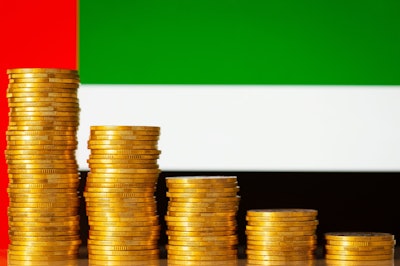
In contrast to elsewhere in the world, poultry and egg prices in the United Arab Emirates (UAE) are stable and forecast to fall. Local media report that this is the result of recent government policies on food prices, while international agencies suggest the controls may be holding back domestic production.
Earlier this week, the cabinet announced a new policy to keep down the prices of nine key basic foods in the UAE.
As well as poultry meat and eggs, these new measures cover bread, wheat, cooking oils, fresh milk and milk powder, rice, sugar, and legumes, reports Zawya.
Included in the cabinet’s new policy are changes in customs exemptions. Aimed to support domestic producers, the exemption will now only apply to imports of products that are not produced locally.
Earlier this year, the Ministry of the Economy introduced measures to keep the retail prices of these essential foods in check. According to an earlier report, retailers were required to present evidence to justify any price hikes in these essentials.
Retailers in the UAE have welcomed the policies, reported Zawya, as benefiting both the local market and consumers.
Looking ahead, this source is forecasting price reductions of 10-15% in the coming months. These will be supported by falling freight costs, a return of regular supplies from local importers, access to new markets, and a strengthening of the currency, the dirham.
The market price situation described in the UAE appears to be in strong contrast to many other countries across the world.
Taking the example of the United Kingdom (U.K.), figures just published indicate annual food price inflation at a 45-year high of 16.2%. Although driven upwards mainly by milk and cheese prices, eggs now cost 22% more than one year ago, reports the government agency, the Office for National Statistics.
Latest from UAE poultry companies
Around one month ago, Gulf News included information from UAE-based egg company, Al Ain. According to the firm, it has launched a number of new products this year to offer a wider choice to consumers. As a result, its portfolio now includes 10 different formats and a range of six egg sizes, with recent introductions of free-range and organic eggs. To help shoppers, the company’s eggs are now stickered in different colors so consumers can more easily distinguish different egg sizes.
One of the largest poultry producers in the UAE, Al Ain Poultry Farm produces 129 million eggs and eight million chickens annually.
For another of the UAE’s leading poultry companies, Al Rawdah, focus is on the production of fresh chicken and natural ingredients, according to a similar piece in the same publication in March of 2022. This firm is positioned as the biggest poultry farm and manufacturing facility in Dubai.
The UAE is self-sufficient in fresh chicken, this source reports, and the company’s marketing campaign focuses on the absence of hormones and antibiotics during the growing period, and the omission of additives during processing.
According to the company’s web site, Al Rawdah is part of Emirates Rawabi Group, and has a daily processing capacity of 45,000 birds.
Al Ain and Al Rawdah are the two leading poultry companies in the UAE, according to WATTPoultry.com’s Top Poultry Companies survey.
Price caps fueling UAE poultry imports
In a recent analysis of the UAE’s poultry sector, the USDA Foreign Agricultural Service (FAS) identifies the government’s price caps on poultry as a factor holding back production by local producers. Flock sizes are in decline, according to FAS, as a result of rising costs of feed grains and fertilized eggs.
Over the next two years, a slow recovery is expected for UAE poultry production from 40,000 metric tons (mt) in 2021 to 44,000mt in 2022, and 46,000mt next year.
However, chicken consumption is forecast to remain strong in the UAE, leading to a greater reliance on imports of frozen product, which could be as high as 418,000mt. A high proportion of the incoming product is re-exported to other parts of the Arabian Gulf.
FAS notes that, with a climate unsuitable for grain production, the UAE imports almost all its corn and soy requirements for feed.

















